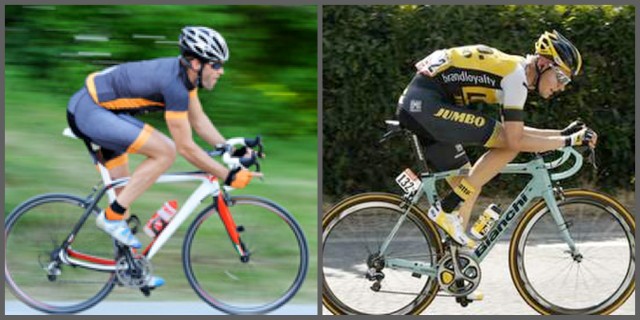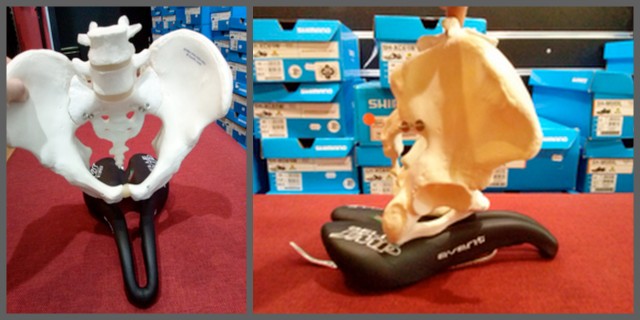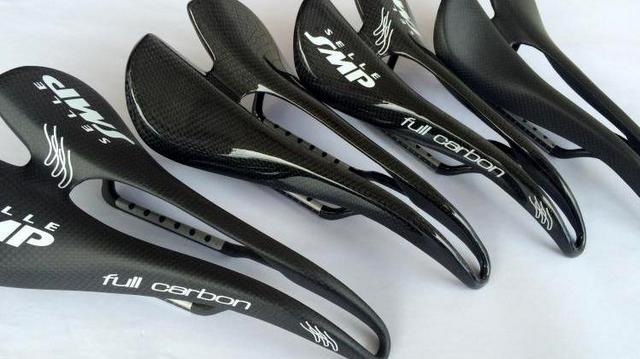Bike fit specialists Kinetic Bike Fitting operate out of Melbourne Osteopathy Sports Injury Centre’s versatile studio space. Ross Hamilton from Kinetic Bike Fitting has put together this detailed article about selecting the correct saddle for your road bike.
Saddles are one of the most often overlooked components on a bicycle. However, of all the investments you can make on your bike, a great seat—matched to your body—is probably the first thing you should consider buying once you have chosen your ride.
Saddles are not just important for providing comfort, they also have a significant impact upon the rider’s biomechanics. Therefore, setting aside some time and a decent budget to choose a saddle that you can confidently take around the bay or over the three peaks is extremely important.
I started working in the bicycle industry in 2004. At that time, the best advice going around regarding saddle choice was to simply try lots of saddles and see what worked best. In hindsight, this is akin to visiting a shoe store and trying out different sized sneakers, boots, dress shoes and casual shoes until you happen to find something that suits.
As I spent more time trying to rationalise saddle choice to customers who were uncomfortable on their current setup, I became very frustrated with the rather haphazard method of choosing seats to suit different riders. Over the last few years, some aspects of saddle choice have been narrowed down. For example, some bicycle stores will now attempt to measure the separation of your sit bones to determine an appropriate saddle width.
Upon reaching my final year of university, I chose to conduct a literature review of all the scientific evidence published on bike saddles. I came to four main conclusions about seats:
- Bicycle saddles can adversely affect the function of important soft tissue structures in a serious way.
- A well fitted seat can significantly improve a cyclist’s biomechanics.
- Measuring the separation of sit bones is a very haphazard method of determining an appropriate saddle.
- Sadly, a large segment of the bicycle industry doesn’t appear to have dedicated very much effort to saddle design.
BICYCLE SADDLES AND ERECTILE DYSFUNCTION
Problems with sexual dysfunction due to bicycle saddles have been reasonably well reported in scientific literature. Many case studies and surveys have found that poorly fitted saddles, especially very narrow saddles, tend to cut off blood and nerve supply to the genitalia and can cause ongoing erectile dysfunction, pain and urinary tract infections in men. Very little has been published regarding the effect of poorly fitted saddles for women, although anecdotal evidence suggests extreme discomfort can occur very quickly.
This is easily explained by comparing the male and female anatomy. When a man sits on a poorly fitted saddle, he places weight on a space called Adock’s Canal. This is where the internal genitalia passes out of the pelvis to become the external genitalia. Importantly, passing through here is the pudendal nerve and artery. Not only do these structures supply the genitalia, they supply the whole saddle region. They are most likely responsible for the vague, radiating pain around the whole of the saddle region that male cyclists often experience.
Men do not have a very good nerve supply down here. One study reported that male participants riding stationary bicycles experienced a 97.5% decrease in blood supply to the penis before they reported any pain. This makes it possible for men to head out on a long ride and only notice a small amount of tingling when they return. In the meantime, fibrosis can gradually occur in the corpus cavernosum and the pudendal artery. This can lead to compromised function in the future.
In contrast, women sitting on a poorly fitted saddle typically sit on the vulva, which has an excellent nerve supply. This means that women experience pain almost immediately. To what extent this issue affects women’s participation rates in cycling is unclear, especially given that it is a delicate topic best avoided in polite conversation. I would not be surprised if this is a big factor in the mismatched gender participation rates in cycling.
BIOMECHANICS
While cycling, a rider has 5 contact points upon the bike; two feet, two hands and their pelvis upon the saddle. Nearly all bike fitting work is achieved by adjusting these five points. From my experience so far, saddles are commonly adjusted to the correct height and then to the correct fore-aft position for the rider. However there is a lot more to a saddle than simply comfort and ensuring good blood supply. A problem I commonly observe in bike fits is an inadequate saddle that causes the rider to sit upright.

The LHS image above shows a rider with a well fitted saddle. The pelvis rolls forward keeping the spine nicely in alignment. The reach forwards to the handlebars is achieved mostly by the length of the rider’s thorax.
In contrast, the RHS image displays a rider with a poorly fitted saddle. They cannot roll their pelvis forward due to avoidance of pain. Therefore, the reach to the handlebars is achieved through their arms and the forward-bending of the spine. This curvature of the spine results in the back muscles supporting the rider’s weight.
Furthermore, the rider with the well fitted saddle finds their hip in a much better position for good pedalling range of motion. This often results in a smoother pedal stroke.
WHERE TO LOOK FOR A GOOD SADDLE
It’s not often that I recommend a particular brand or product over another. However when it comes to bike saddles; I can highly recommend Selle SMP. In my opinion these saddles have the best published scientific evidence behind them for maintaining blood flow while cycling and the best all-round design. Circulation is critical to maintaining comfort on a saddle.
The major feature of SMP design is the big central cut out along the length of the saddle. This is to ensure good circulation and relieve pressure on the perineum, even when the cyclist moves forward or backward on the saddle. The varied shapes of the saddle provide support to the boney structures of the pelvis. In order to maintain good blood and nerve supply, a saddle should only place a rider’s weight on the boney parts of the pelvis and not on the soft tissue.

Right: A good saddle provides plenty of contact area along the ischo-pubic ramus.
This is why a more padded saddle does not necessarily make for a more comfortable saddle. Highly padded gel saddles often feel comfortable to sit on at first, but all of that padding tends to flow up in to the the nooks and crannies of our saddle region and ends up compressing the pudendal artery, resulting in an uncomfortable ride.
This is where the commercial hip measuring devices come in. They usually consist of some sort of padded seat that leaves an imprint after being sat on. These imprints are supposed to measure the separation width of the ischial tuberosities, or sit bones.
While the term sit bone is applicable when sitting on an office chair, on the bike we actually roll forward on to a different boney structure called the ischio-pubic ramus. The two ischio pubic rami make up an arch below the pubic symphisis. These arches vary significantly from person to person.
Typically speaking, men have a very V shaped arch, whereas women’s are more U shaped. Then there are differences in the width of the pelvis from person to person. While there are differences between male and female pelves, there is also a significant amount of overlap between the two. For example, women do have wider hips than men for their given size, but this is often balanced out by men being bigger than women on average.
According to SMP, their data suggests that there is very little difference in the average separation width of ischial tuberosities between men and women.
Finally, the section of the arch you sit on is different depending on the type of bike that you ride.
Cyclists on upright hybrid bikes sit on a wider part of the arch. Road cyclists with a low down position sit on a much narrower section of the arch and therefore need a narrower saddle. Furthermore, the lower the position of the cyclist, the more important the cut-out saddle becomes to maintaining circulation.
These three main factors mean that the width of the ischial tuberosities is a poor measure for finding the best saddle for a given rider. The idea of men’s and women’s saddles is also probably a myth.
FINDING A GREAT SADDLE TO SUIT YOU?
The first thing to consider is the position you tend to ride in on the bike. The lower down you are, the narrower it should be. Then, the wider your hips, the wider the saddle. Consider the amount of padding you need. Padding is mostly to absorb bumps from the bike. So a mountain bike saddle will benefit more from padding than a road saddle. Finally, the big unknown is the exact shape of the bones that make up your pelvis. While difficult to determine accurately, here there is a small role for trial and error in saddle fitting. You can usually narrow down a selection to a few saddles to try. Most good bike shops will have a trial program for saddles where you can pay a refundable deposit and test a saddle for a week or two.
Don’t be afraid to test a few different models and try not to select a saddle based on price alone. I can assure you that getting the right saddle is much more important than disc brakes, carbon fibre wheels or electronic gears.
As previously mentioned, I recommend Selle SMP saddles first up. If you can’t get comfortable on an SMP, Specialized are also worth a try too.
Kinetic Bike Fitting is operated by Dr Ross Hamilton and Craig Lia. Between them, they have over 15 years experience working in the bicycle industry. Ross is a registered Osteopath and Craig is completing his Masters of Osteopathy. Combining their knowledge as bike mechanics with the in-depth anatomy and biomechanics training of Osteopathy was a natural fit.
Ross races regularly on both the road and track and Craig races regularly in sprint and Olympic distance triathlons. To find out more, or to book a bike fit, please visit their website:


